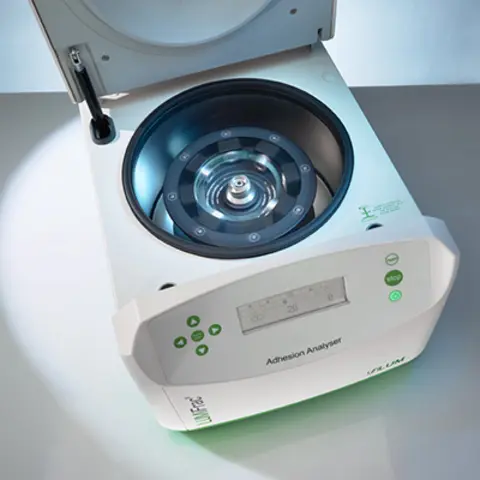The first part puts the focus on lubricants for cold rolling applications. Three case studies are presented after a detailed introduction of LUM’s patented STEP-Technology® (Space and Time resolved measurement of Extinction Profiles) for particle, droplet and dispersion characterization. The accelerated stability testing of o/w emulsions within few minutes by using a LUMiSizer® instrument is compared with a rather complex emulsion stability index determination lasting for several hours and having a higher economic and environmental impact than the LUM method.
The combination of droplet size distributions, direct accelerated stability testing results, both obtained by the same LUMiSizer, with other analytical methods form the basis for a reliable lubricants characterization, making it applicable for even challenging samples. This concept can also to be applied to other kind of formulations, products and applications.
In the final case study, qualitative and quantitative comparison by the instability index are discussed.
Customers’ experiences including the prediction of long-term rolling oil emulsion stability are subject to a literature review.
September 14, 9 am (UTC+2/CEST)
Register today for free:
https://bit.ly/3DzL8Al
The second webinar focuses on stability and particulate properties of high-performance lubricants. A deeper focus is set on three analysis modes as provided by SEPView® software for LUM instruments. Users of the Stability Analyser LUMiFuge® make use of the integral transmission and the instability index, while operators of the Dispersion Analyser LUMiSizer have additional access to the unique creaming velocity distribution as well as to the volume weighted droplet size distribution, including specific parameters like the Sauter diameter. To take high-performance lubricants as an example, the optimum use of each analysis mode is discussed and how it can be used for research & development as well as for process optimization and quality control.
September 16, 9 am (UTC+2/CEST)
Register today for free:
https://bit.ly/3DCyYH0
The third webinar starts from a different point of view: the naked eye appearance of samples, being either transparent, turbid or even dark. A silicon oil case study proves insight into the easy and fast sample ranking by the separation index. Understand the kinetics of separation when calculating the creaming velocity. The concept of comparative shelf-life analysis according to ISO/TR 13097 is demonstrated.
The advantage of measuring samples at different temperatures is highlighted for a transparent concentrate. Turbid samples, like o/w- or w/o-emulsions are characterized either accelerated (LUMiSizer) or in real-time by the Separation Analyser LUMiReader®PSA. The case study for dark lubricants again refers to accelerated testing, as applied by the customers.
September 17, 2 pm (UTC+2/CEST)
Register today for free:
https://bit.ly/3gVsHwa
Each webinar can be attended individually. The presenting authors will be available for live Q&A in each session. Joining the entire series will enable you to solve your current and upcoming tasks in the characterization of lubricants and coolants in an even better way.
LUM will communicate alternative options after the broadcasting


